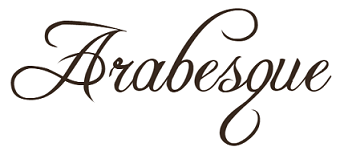12 gFLOWIZ project & Arabesque
12.1 The geographic flow visualization (gFLOWIZ)
From a scientific point of view, Gflowiz research project is part of the new paradigm of visualization cartography introduced by Mac Eachren in 2004, which follows Waldo Tobler’s ideas of analytical cartography. This vision of cartographic analysis consists in combining within the same interface the two pillars of representation: (geo)visualization and the upstream data processing of the corresponding geographic and statistical data.
The main challenge of gFlowiz is to follow this thread, by relying on current technological possibilities, in particular those offered by the new visualization and web mapping libraries

Geographic flows visualisation - GFlowiz
12.1.1 Funding
The project is initially funded by the Univ. Gustave Eiffel (former IFSTTAR’s scientific direction) with the participation of the Projet fédérateur Mobilities and numeric transitions PF MobTransNum. The team is strengthened by the participation of members of CNRS laboratories (UMR Géographie Cités and UMR Passages), as well as it is supported by the research group GDR Magis through the GEOWEB prospective action (2019). In 2021, funding is renewed through 2023, december in conjunction with the start of the Tribute To Tobler project.
12.1.2 Contributors
Scientific responsibility, design, development and coordination Françoise BAHOKEN, Étienne CÔME & Laurent JÉGOU
Development & Design Étienne CÔME (coord.), Thomas BAPAUME (2019) & Paul FABRE (2020).
Other members Grégoire LE CAMPION, Marion MAISONOBE, Alain NGUYEN (2018) & Nicolas ROELANDT
12.2 About Arabesque

12.2.1 Main goal
Arabesque is part of this Gflowiz research project, which consists in building mapping applications for flow maping on the web.
One of Arabesque’s goals is the web design of a geo visualization application for flow or traffic data to analyze the geographical determinants of spatial mobility. To this end, it aims to allow data describing geographical interactions to be explored and represented graphically, from different points of view, by focusing on statistical and geographical data filtering, spatial scale issues specific to certain data sets (the world scale or local scale) and their temporality.
12.2.2 Presentation
This first version allows the exploration, filtering, geovisualization and representation of complex matrices. It provides a full toolset to filter you origin-destination data and simplify it in order to make clearer and understandable flowmaps.
Arabesque allows the creation of flow maps from a web browser - equipped with Mozilla or Chrome, from its own datasets. It is based on current technological possibilities, in particular those offered by the new web visualization (built in javascript and HTML 5) and mapping libraries:
12.2.3 Challenges
The challenge of Arabesque consists in offering a set of tools for the analysis and the cartographic representation of complex matrices (categorical and temporal). Its methodology is innovative : it articulates several dimensions of a matrix, interactivity and animation.
Its techniques allow an easy exploration, a fluidity of the display in a simple configuration facilitating the appropriation of flow mapping by different audiences (academic, institutional, socio-economic, educational…).
You can find More imformation about the project’ life on the research notebook geoflowiz.hypotheses.org